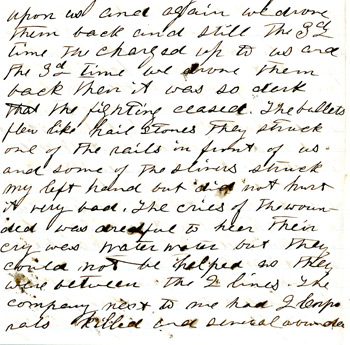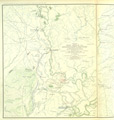Click Center Image for Full Size Picture
The Red River Campaign, conducted from March 2 to May 20, 1864, was one of the largest Army-Navy operations of the war. After reenlisting in 1863, Edwards and the 29th Maine found themselves again assigned to Major General Nathaniel P. Banks. They arrived in New Orleans after seventeen days on a transport ship, stopping once along the way in Key West to "coal up," but were not allowed off due to two cases of smallpox on board.
The Union's goals at the start of the campaign were to capture Shreveport, Louisiana, where the Confederate headquarters of the Trans-Mississippi Department was located; to eradicate the Confederate Army's control west of the Mississippi especially in Texas; and to confiscate thousands of bales of cotton from the plantations along the Red River. The Union's advance into Texas was in part to prevent feared invasion by France from Mexico.
The date of the campaign was dictated by the water levels in the Red River which were only navigable to Union gunships for a short period of time in the spring. The campaign began with three commanders, but no outright leader. Banks and his forces were to move northwest along the Red River to Shreveport, Louisiana. Major General Frederick Steele was to take his forces south from Little Rock, Arkansas. Major General William T. Sherman loaned BG Andrew Jackson Smith and 10,000 of his troops to RADM David Porter to protect his ninety gunships.
Grandecore near Natchitoches, Louisiana.
Banks made a crucial mistake in the execution of his part of the plan. Intentionally misguided by a Southern river pilot, Banks chose an inland road that ran through Pleasant Hill and Mansfield before heading north again to Shreveport. This decision led Banks directly into the path of the waiting Rebels. On April 8 Major General Richard Taylor's forces met Banks's men at the Sabine Crossroads outside of Mansfield. Though they were driven back by the Confederates, Abial Edwards and the 29th Maine fought well. The next day at Pleasant Hill, Edwards and the 29th found themselves again in the center of the action. When Union reinforcements failed to arrive from Arkansas, Banks decided to retreat.
In the end, the campaign failed to accomplish a single objective due to poor planning and mismanagement. It had been dictated by political agendas and party politics as well as commercial interests. Its failure led to a congressional investigation and effectively ended Banks's military career as well as his 1864 presidential aspirations. Sherman called the campaign, "one damn blunder from beginning to end."






